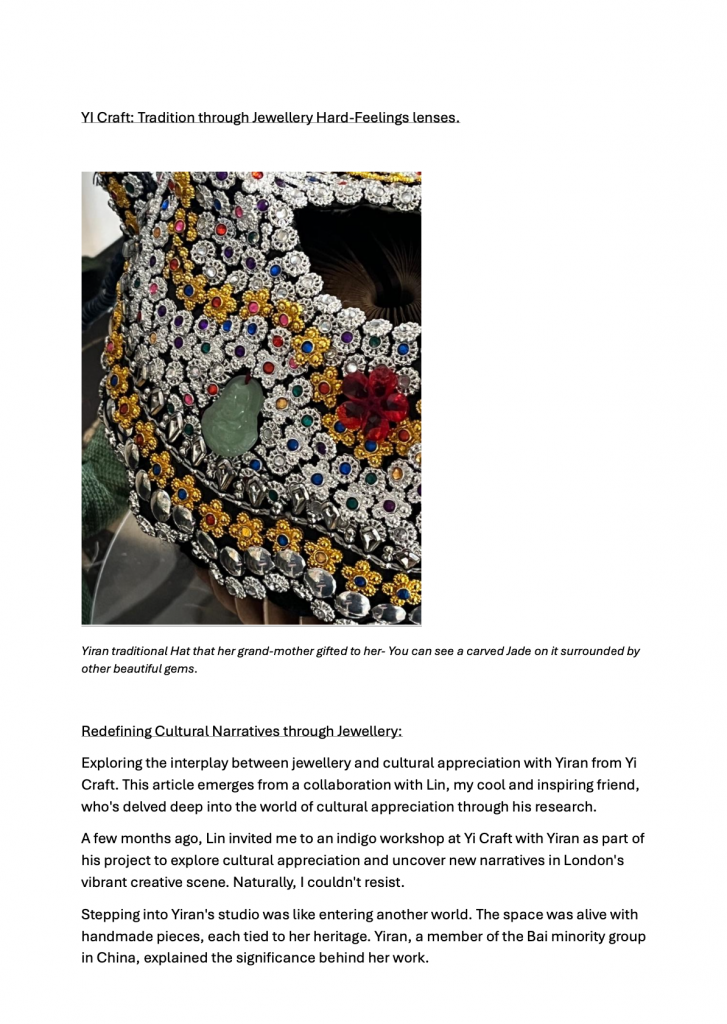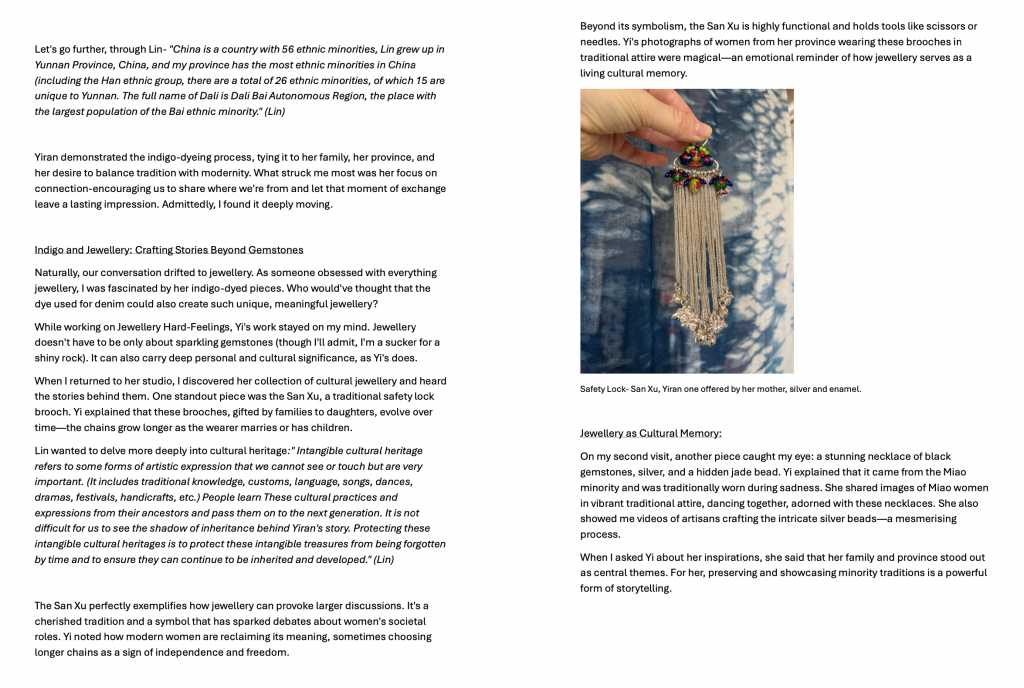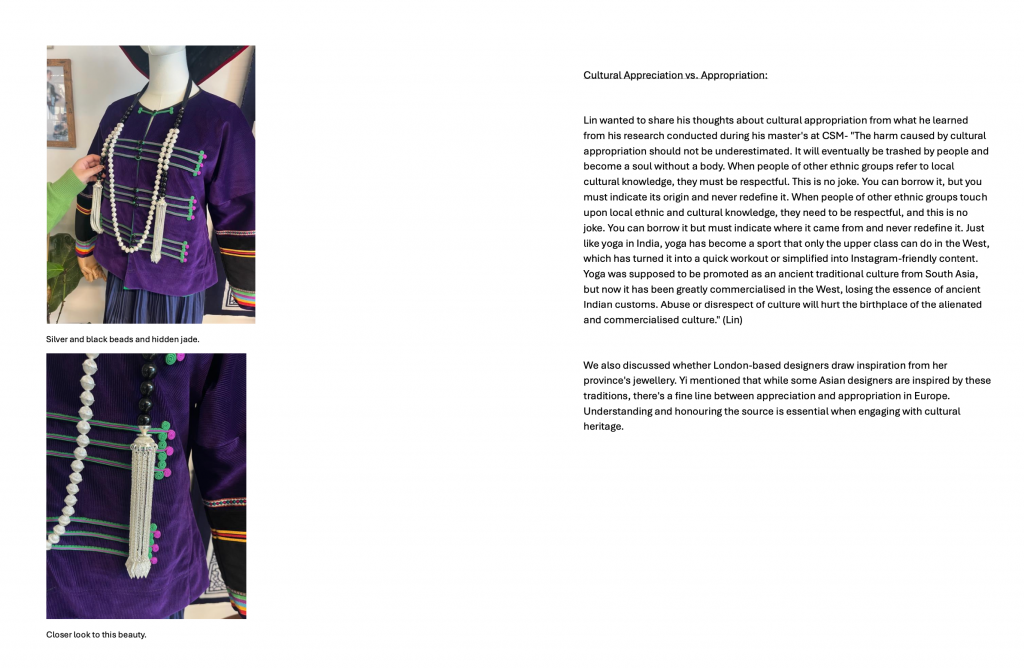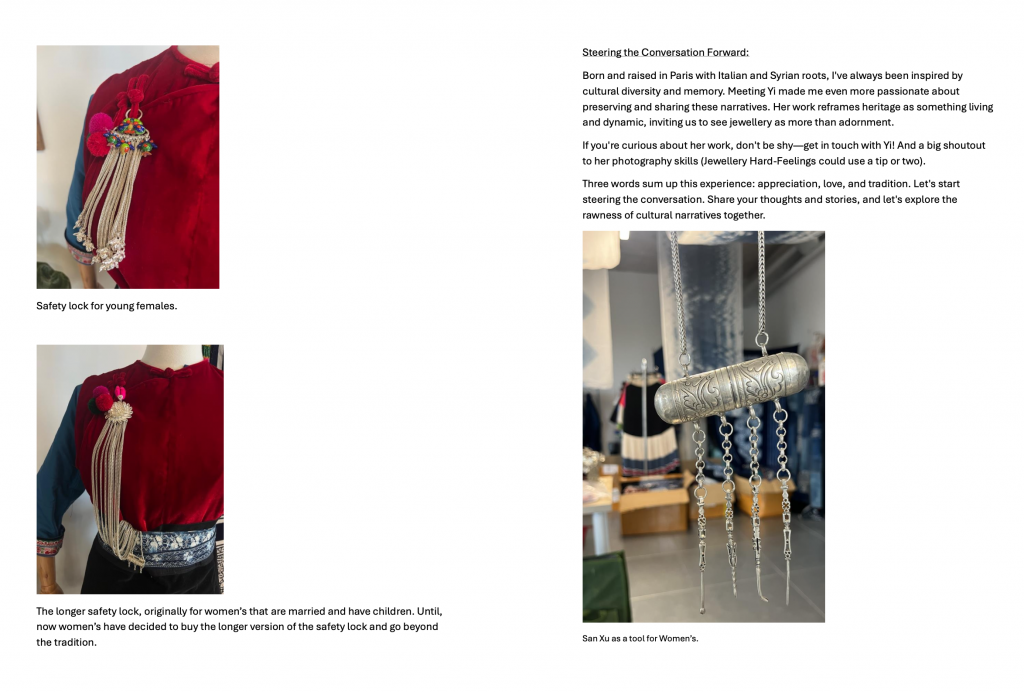I invited my classmate Emma to participate in my second intervention (a workshop on making Bai tie-dye). She told me that this workshop was like a case study, which made her realize that culture is constantly being passed on. When Yiran (the person in charge of the workshop) explained the history and culture of the Bai people and her story with the Bai people, she realized that the transmission of culture is everywhere. Through Yiran’s jewelry craftsmanship, we saw how to transform intangible cultural heritage into a living form of expression, inspiring us to regard jewelry as something beyond decoration, a way of cultural memory and expression.
Emma once said in her feedback: “Everyone should try to listen to and appreciate each other’s culture without judgment and violence. We are all different, and this workshop broadened my mind.”
Emma and I talked about what we were doing in a chat. Emma told me that she is currently working in the jewelry industry, and her main goal is to speak to new people in the jewelry industry (help them promote). We then talked about how we could write an article about jewelry, cultural appreciation, and cultural appropriation to remind people that cultural appreciation and cultural appropriation exist around everyone and to call on everyone to take a serious look at this issue. We must recognize the origin of each culture and respect it without crossing the line. Emma invited me to write and publish this article, which shows that my second intervention was successful because she understands the importance of respecting culture. Every cultural work is complete of a profound story, and we should continue to write this story to pass it on rather than tampering with it at will.




The article we co-wrote is called “Tradition through Jewellry Hard-Feelings lenses.” In it, Emma and I share our introductions to cultural appreciation and cultural appropriation. This article is more like a summary paper for me, in which I share insights from my research during my studies at Central Saint Martins and emphasize the harm of cultural appropriation and the need to be respectful when citing other cultural knowledge.
The article we wrote was published on the high-traffic website (JHF-Jewelry Industry) where Emma works. We sincerely invite everyone to comment and provide feedback. Cultural exchanges should be based on equality and respect, and we hope to collect authentic evaluations through this article.